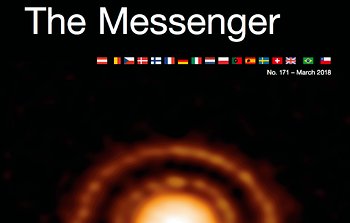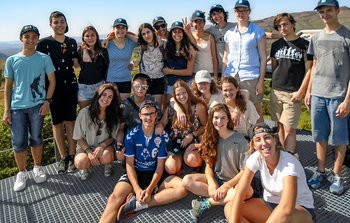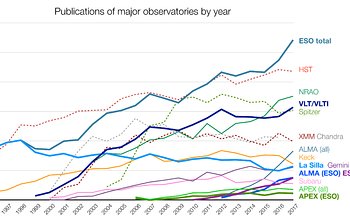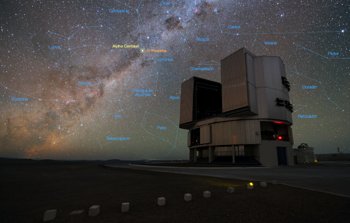New images from ESO’s Very Large Telescope in Chile and other telescopes reveal a rich landscape of stars and glowing clouds of gas in one of our closest neighbouring galaxies, the Small Magellanic Cloud. The pictures have allowed astronomers to identify an elusive stellar corpse buried among filaments of gas left behind by a 2000-year-old supernova explosion. The MUSE instrument was used to establish where this elusive object is hiding, and existing Chandra X-ray Observatory data confirmed its identity as an isolated neutron star.
The release, images and videos are available on:
https://www.eso.org/public/news/eso1810/
Kind regards,
The ESO Education and Public Outreach Department
5 April 2018

|
5 April 2018: Over the past months, the ESO Supernova team has been preparing the programme for the new Planetarium & Visitor Centre, due to open to the public on 28 April 2018 ...
|
| Read more |

|
3 April 2018: The latest issue of the free magazine Science in School is now available online and in print. This European journal for science teachers offers up-to-date information on cutting-edge science, teaching ...
|
| Read more |

|
29 March 2018: The latest edition of ESO's quarterly journal, The Messenger, is now available online. Find out the latest news from ESO on topics ranging from new instruments to the latest ...
|
| Read more |

|
26 March 2018: Applications for the ESO-supported Summer AstroCamp 2018 will open on 1 April. AstroCamp is an academic programme in the field of astronomy and physics that aims to stimulate curiosity and ...
|
| Read more |

|
21 March 2018: Over the past months, the ESO Supernova team has been keenly working on the preparation of the programme for the exciting new planetarium and visitor centre, due to open to ...
|
| Read more |

|
21 March 2018: ESO has signed a contract with the Spanish company IDOM Consulting, Engineering, Architecture SAU for the production of a major new component of ESO’s Extremely Large Telescope. The Prefocal ...
|
| Read more |

|
21 March 2018: School students from around the world are invited to take part in the 2018 Catch a Star contest. This is a European astronomical writing contest, with prizes that will leave ...
|
| Read more |

|
12 March 2018: At its meeting on 7 March 2018, ESO Council decided to clarify the status of Brazil’s current relationship with the Organisation, for the benefit of both Brazil and ESO ...
|
| Read more |

|
8 March 2018: The latest survey of peer-reviewed scientific papers published during 2017 has shown that ESO remains the world’s most productive ground-based observatory. Astronomers used observational data from ESO facilities to ...
|
| Read more |

|
Interview with: Richard I. Anderson
30 March 2018: While most people have heard of the North Star and may even be able to find it in the night sky at the north celestial pole, it remains the fascinatingly ...
|
| Read more |

|
Interview with: Markus Kasper
23 March 2018: Our fragile blue planet circles a star that is just one of hundreds of billions in our galaxy — which itself is just one stellar neighbourhood in a vast Universe ...
|
| Read more |

|
Interview with: Iván López
16 March 2018: At a soaring altitude of 5100 metres above sea level, the ALMA Observatory is one of the world’s most extreme work environments. Athletes and hikers who climb this high usually ...
|
| Read more |

|
Interview with: Sebastian Lopez
9 March 2018: Every galaxy is surrounded by a mysterious halo that scientists currently know little about. A team of astronomers has recently used a new technique to map the structure of a ...
|
| Read more |
|
|
|
|